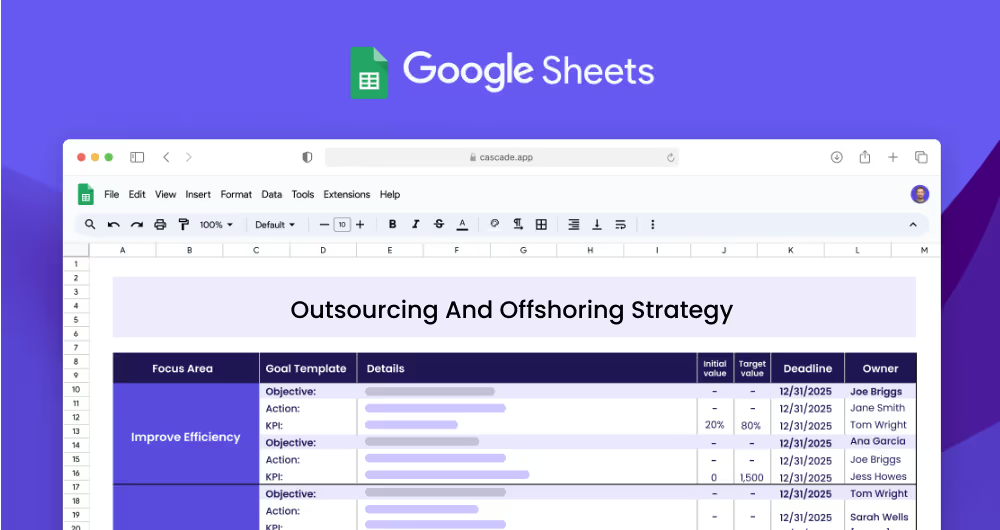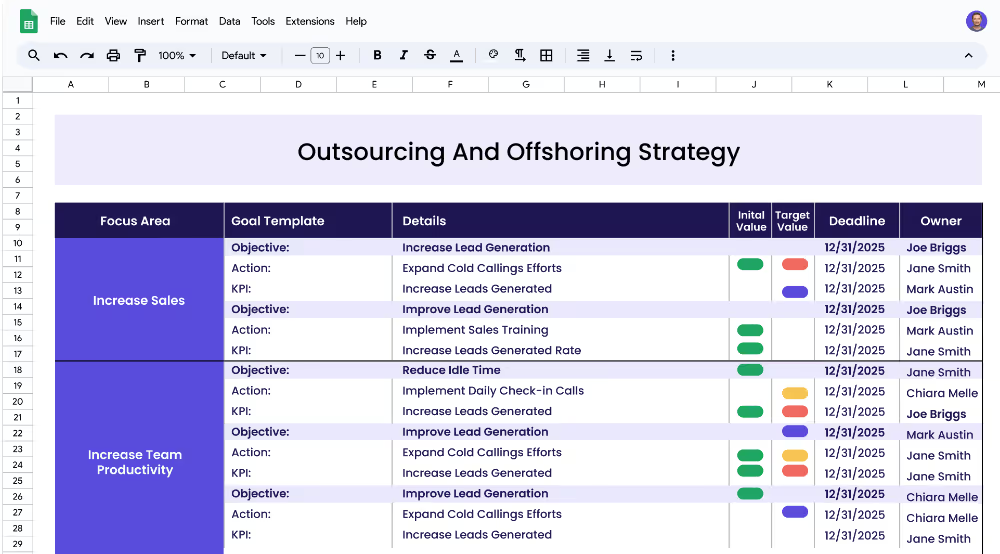Outsourcing and offshoring is an effective strategy for businesses to reduce operational costs while improving the potential for scalability and efficiency. By outsourcing and offshoring certain operations, businesses can benefit from increased flexibility, cost savings, and increased control over the supply chain. A successful outsourcing and offshoring strategy requires careful consideration of the goals of the business, the potential risks, and the resources necessary to achieve those goals.
Each focus area has its own objectives, projects, and KPIs to ensure that the strategy is comprehensive and effective.
The Outsourcing and Offshoring Strategy template is designed to help organizations create plans for outsourcing and offshoring specific supply chain functions or processes. The template provides a comprehensive 5-step approach to guide businesses through the process of developing an effective outsourcing and offshoring strategy. The template includes guidance on defining focus areas, setting objectives and measurable targets, implementing related projects.
The first step in creating an effective outsourcing and offshoring strategy is to define clear focus areas. Focus areas provide a broad overview of the goals of the business and the initiatives that will be necessary to achieve those goals. Examples of focus areas can include cost reduction, efficiency, risk mitigation, or customer service.
After defining the focus areas, organizations should consider the objectives that could fall under each focus area. Objectives are specific actions or initiatives that need to be achieved in order to reach the goals of the business. For example, under the focus area of cost reduction, the objective could be to reduce operational inefficiency.
Once the objectives are established, organizations should set measurable targets, also known as KPIs, to tackle each objective. KPIs are measurable metrics that can help track the progress of the objectives. For example, under the objective of reducing operational inefficiency, the KPI could be to reduce operational costs by 15%.
Once the KPIs are set, organizations should implement related projects to achieve the KPIs. Projects are specific initiatives or activities that are necessary to reach the KPIs. An example of a project related to Cost Reduction could be: Research possible new suppliers with better costs.
If you're ready to accelerate your strategy and escape the limitations of spreadsheets, the Cascade Strategy Execution Software provides a superior solution. With Cascade, gain real-time updates, centralized collaboration, and automated reporting. This platform empowers your team to easily track progress, adapt swiftly, and maintain alignment, ensuring that your strategy is executed effectively. Shift away from cumbersome spreadsheets and propel your strategy forward with Cascade. Sign-up for free or book a demo with one of our strategy experts to see how we can help you streamline and succeed.


